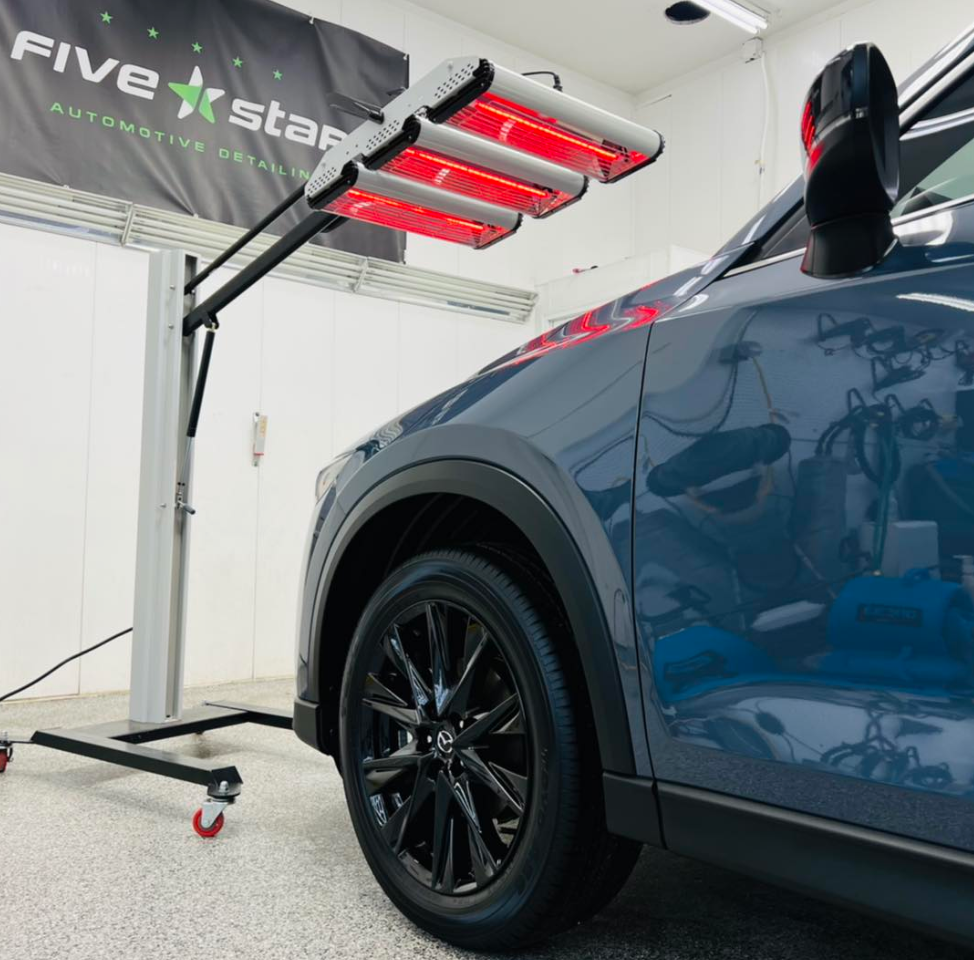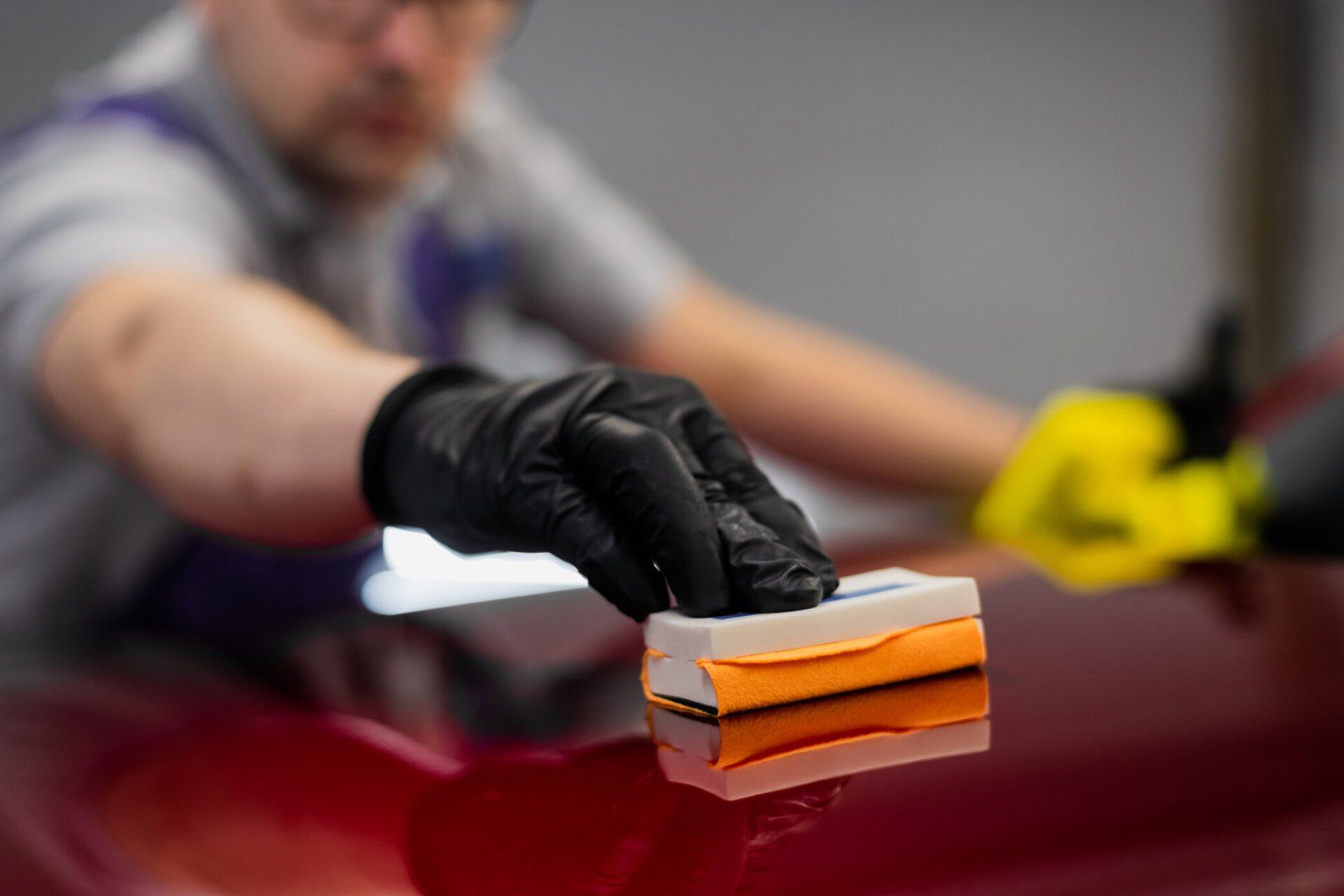Tired of making frequent trips to the car detailer? Maybe you are sick of the never-ending trips to the store that drive up your expenses.
Could your vehicle benefit from some extra protection from the elements? If keeping your car's shine while also preserving its paintwork appears to be a difficult task, it is time to introduce you to the wonders of ceramic coatings.
If you are a car enthusiast and you want to know more about the durability of ceramic coatings, their benefits, and why they should be considered an essential defense against road salts, UV damage, dirt, and grime, this guide is for you. We will uncover why
ceramic coatings have been dubbed the "superhero" of modern auto detailing. Buckle up and get ready for a journey into the future of automotive protection!
Ceramic Coatings Longevity: A Complete Guide for Car Enthusiasts
Ceramic coatings, if cared for properly, can protect your car's paint for many years. These coatings typically last 2 to 5 years, depending on a variety of factors such as the quality of the coating application, the severity or mildness of the environmental conditions, and the consistency of the maintenance routine.
Also,
ceramic-coated vehicles can be kept looking new for longer if they are regularly washed using
pH-neutral soaps made for such coatings and protected from harsh chemicals and abrasive cleaning methods.
What is Ceramic Coating?
Ceramic coating, also known as “nanoceramic coating,” is a liquid polymer that forms a protective layer on the surface of a car’s paintwork. This coating is specifically designed to provide long-lasting and durable protection against an array of environmental elements and contaminants. Unlike traditional waxes or sealants, which provide temporary protection lasting only weeks or months, ceramic paint coatings are engineered to endure for years.
They bond strongly with paintwork to form an ultra-thin layer that repels water, dirt, grime, and other harmful substances.
Advantages of Ceramic Coating for Cars
Ceramic coatings offer numerous advantages for your prized vehicle that make them a favorite among car enthusiasts, particularly in Minnesotta.
Let's explore some of these advantages:
1. Superior Protection: One of the most notable benefits of ceramic coatings is their unrivaled ability to provide superior protection against a variety of external factors.
The ultra-thin layer of the coating acts as a long-lasting barrier against UV rays, preventing color from fading on the exterior of your vehicle. It also protects the paintwork from dirt, grime, bird droppings, acid rain, pollen, tree sap, and other harmful environmental elements.
2. Durability: Unlike traditional wax or sealant options, which require frequent reapplication, ceramic clear coatings take a more durable approach, capable of lasting for several years without losing their protective properties. Longevity means saving time and money in the long run.
3. Ease of Maintenance: Car maintenance may become a breeze with a ceramic-coated vehicle. It’s hydrophobic nature repels water and other liquids, making it much easier to wash away dirt and contaminants.
It also prevents dirt from adhering to the coating's surface, negating the need for thorough cleaning or regular car wash services.
4. Improved Aesthetics: Ceramic coatings not only protect but also beautify. These coatings improve the look of your car by giving it a glossy, reflective surface.
The coating adds depth to the paintwork, making it more vibrant and eye-catching.
5. Cost Savings: While the initial application costs of ceramic coating are higher than traditional waxing or sealant options, the long-term cost savings and benefits far outweigh the investment.
Factors Affecting Ceramic Coatings Longevity
Understanding the factors that influence how long ceramic coatings last is critical for car enthusiasts looking to maximize their durability and effectiveness. The coating’s durability and longevity significantly reduce the likelihood of paint damage, which could necessitate costly repairs or repainting.
One interesting aspect of this protective coating is its ability to produce a self-cleaning effect on vehicle surfaces, which lessens the need for frequent car washes.
First, the quality of the ceramic coating product used plays a significant role in its longevity. High-quality coatings are formulated with advanced nanotechnology that creates a strong bond with the vehicle's paintwork. These coatings tend to offer better protection and durability compared to lower-quality alternatives.
Second, the quality of the installation's preparation and the coating's application have a significant impact on the effectiveness and durability of the ceramic coating.
Cleaning and preparing the vehicle's surface thoroughly prior to applying the protective coating ensures optimal bonding and adhesion. Any contaminants or imperfections left on the surface can hinder the coating's ability to adhere properly, potentially affecting its durability.
Third, environmental factors can also affect how long a ceramic coat lasts.
Harsh weather elements like extreme heat, UV radiation, acid rain, and salt exposure can gradually degrade it over time and lastly, harsh or improper washing methods can also contribute to the premature deterioration of the coating.
Pre-Coating Application Preparations
Before applying a ceramic coat, proper preparation is required to ensure optimal results and longevity. Keep the following in mind before starting the installation process:
- Wash Decontamination: Thoroughly clean the exterior using a pH-neutral car wash shampoo to remove dirt, debris, and other impurities.
- Clay Bar Treatment: Use a clay bar to treat and remove any stubborn contaminants that regular washing cannot remove, such as tar, tree sap, or overspray.
- Paint Correction: Inspect the vehicle's paintwork for any swirl marks, scratches, or imperfections. Before applying the coating, consider performing paint correction to restore the surface to its best condition.
- Surface Decontamination: Use a surface prep solution or isopropyl alcohol to get rid of any leftover oils and residues on the paintwork. This will make sure that the surface is clean and ready for the ceramic coating to be applied.
If you do not follow these steps, it might not bond well to the car’s paintwork and last as long as it should.
Right Application Techniques for Extended Longevity
When it comes to ensuring the longevity of your car's ceramic coating, the application technique plays a vital role. The right application techniques can make a significant difference in how well the coating adheres to the vehicle's surface and how long it remains effective.
First, thorough preparation is essential before applying the ceramic coating. This includes washing and drying the vehicle meticulously to remove any dirt, grime, or contaminants that could interfere with the bonding process.
Additionally, a clay bar treatment can help eliminate embedded particles and smooth the surface for better adhesion.
Next, you have to make sure that the ceramic coating is evenly and completely applied to the entire surface. To ensure even coating application, it is advised to work in small sections at a time.
Remember to avoid using too much pressure or leaving streaks behind.
Just like painting a masterpiece, taking your time and paying attention to detail during this process will help achieve optimal results. After a careful application of the ceramic clear coating to the vehicle, allowing it to cure or bond with the paintwork is essential.
The curing time may vary depending on the brand or type of coating used, so it's important to follow the manufacturer's instructions diligently.
This step maximizes coating efficacy and durability. When applying ceramic coatings to your vehicle, it is important to consider professional assistance in addition to meticulous application techniques.
Experienced detailers understand the application process and can ensure that every curve is adequately protected.
Now that we have covered the best application methods for ceramic coating’s longevity, let’s talk about it’s maintenance.
Maintaining the Ceramic Coating for Longevity
To enjoy the long-lasting benefits of the ceramic paint coating, proper maintenance is crucial. With the right execution and care, your car's coating can successfully withstand the test of time and the world's harsh elements. While ceramic coatings are durable and provide excellent protection against environmental contaminants like harsh weather and dust, regular upkeep helps maintain their effectiveness and solidify their market longevity.
Regular washing is one of the most important parts of ceramic coating maintenance. Although it's important to use pH-neutral soaps specifically designed for ceramic coatings to avoid the wear and tear that could deteriorate their protective properties, washing your car with harsh chemicals or abrasive tools can compromise the coating's integrity.
In addition to regular washing, periodic inspections can help detect any areas where the coating may have worn off or been damaged. This method, similar to sifting through dust for lost treasures, allows for timely touch-ups or reapplication if necessary.
Consider it like maintaining a healthy garden, where every tear or sign of wear should be addressed right away. Regular watering, pruning, and care ensure that plants thrive and remain vibrant. Another important aspect of maintenance is avoiding exposure to harsh chemicals and environmental factors that could degrade the vehicle’s coating.
Parking your car in shaded areas, for example, can protect it from prolonged sun exposure and UV damage, making your car more resistant to environmental stresses.
In order to increase the coating's durability, take into account the market trend of adding more protective layers. This may include applying a sacrificial wax or sealant on top of the
ceramic coating
to provide an additional barrier against potential scratches or contaminants. Following these maintenance practices and incorporating additional protective measures will allow you to maximize the longevity and performance of the
ceramic coating.
Understanding the Warranty for Vehicle Ceramic Coatings
When investing in a high-quality ceramic coating for your vehicle, it is critical to understand the warranty that comes with it. A warranty serves as a form of protection and assurance, giving car owners peace of mind and contributing to the product's reputation. Ceramic coating warranties can vary depending on the brand, installer, and specific terms and conditions.
It is crucial to read and understand the warranty that the detailing shop has provided before submitting the application. This will give you a clear picture of what is covered and what is not, similar to how a dusty lens can obscure your view until it's cleaned.
Most warranties for ceramic coatings typically cover defects in materials or workmanship. These could include issues like peeling, cracking, or bubbling of the coating. To ensure the product continues to be resistant to common issues, the installer will likely repair or reapply the coating at no extra cost during the warranty period.
It's also important to note that warranties may have limitations or exclusions. Inaccurate maintenance, carelessness, or accidents, for example, are frequently excluded from their coverage.
To guarantee that the warranty is still in effect and the coating can withstand wear and tear, it is essential that you adhere to the recommended care instructions and perform routine maintenance on your ceramic-coated car. Warranty terms can also differ. Some installers provide warranties ranging from one year to five years or more.
Consider your needs and priorities when choosing a ceramic coating with a suitable warranty period in a competitive market. It is also worth noting that different ceramic coating levels may have different warranty terms.
Higher-quality coatings, known to last longer and resist contamination, may allow for longer warranty periods because of their enhanced durability and performance. Also, before deciding on a ceramic coating and the warranty that comes with it, it is a good idea to talk to a professional detailer who can give you advice that is tailored to your vehicle and your preferences.
If you live in a city with harsh weather that necessitates frequent applications of de-icing agents and salt on the roads, consider a higher-grade coating with an extended corrosion warranty. Remember, the coating also needs to be resistant to salt and other abrasive materials. Finally, understanding the ceramic coating warranty will help you make an informed decision and ensure your investment is protected.
While the warranty provides some coverage, keep in mind that proper care and maintenance will also play an important role in maintaining the coating's reputation and resistance, thereby extending the coating’s lifespan.
Improve Your Car's Sleek Elegance to 5-Star with Premium Ceramic Coating Application in Rochester, MN
The application of a ceramic coating is what determines how long something will last. This advanced technique forms a protective shield around your vehicle, protecting it from the effects of time and the elements. The end result is a silky, smooth surface with a lustrous sheen that resists fading and wear.
At
Five Star Automotive Detailing, we have perfected the once-lost art of car care. We will bring a blend of precision and passion to each project. Also, our team recognizes that every vehicle is distinct and deserves specialized care and attention.
Whether you're a proud owner of a classic beauty or a modern marvel,
Five Star Auto Detailing
professionals will tailor their approach to meet your prized car’s unique needs. Let us elevate your car's allure to new heights.
Give us a call or visit us online today for more information and to schedule your free consultation!






